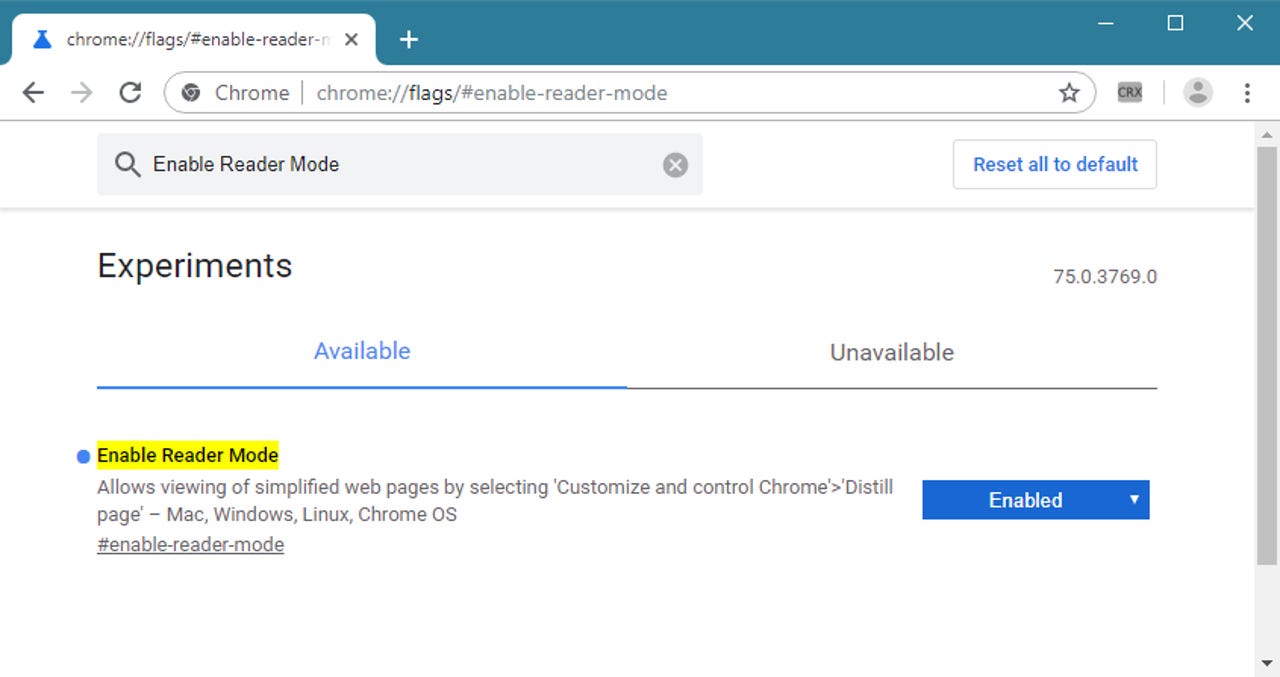Google Chrome to get a Reader Mode

Google's Chrome browser will get a Reader Mode, similar to the one found in competing browsers like Firefox and the old Microsoft Edge. The feature is currently under development, but Chrome Canary users can test it starting today.
Chrome's Reader Mode will work by stripping pages of most of their useless content, such as ads, comments sections, or animations, and leave a bare-bones version behind, showing only titles, article text, and article images.
How to enable Reader Mode in Chrome Canary
Work on the feature started in February this year when Google engineers began porting the "simplified view" offered by Chrome on Android to desktop editions. The porting work isn't the giant undertaking project that some believe, as some of the code was already ported back in 2015, and it would have been possible to use it since then, with the help of some clever hacks.
Today is the first day that a fully-functional Reader Mode is active in Chrome's desktop versions --via Google Chrome Canary distributions-- without making modifications to the chrome.exe file.
To enable and test Chrome's upcoming Reader Mode, users can visit the chrome://flags/#enable-reader-mode section in their Chrome Canary version, and enable the Reader Mode option.
Once the Reader Mode flag is set to "Enabled," a restart will be required before users can enter a page's Reader Mode.
While Reader Mode can be used on any page, it works better with news stories and large text-based content. To use it, users must click the top-right Chrome dropdown menu and select the "Distill page" option.
Once enabled, this is how Chrome's current Reader Mode looks like:
ZDNet understands that there are no current plans to enhance Chrome's Reader Mode beyond this simplified view.
The idea, as stated in the Chrome bug report for tracking the implementation of this feature, was to port Chrome for Android's "Simplified View," rather than create a self-standing Reader Mode, akin to Firefox's more advanced alternative, which supports loads of options, ranging from text customization features to text-to-speech support.
All the Chromium-based browsers
More browser coverage:
- NoScript extension officially released for Google Chrome
- Internet Explorer zero-day lets hackers steal files from Windows PCs
- Google Chrome engineers want to block some HTTP file downloads
- Former Mozilla exec: Google has sabotaged Firefox for years
- Opera 60 released with a built-in cryptocurrency wallet
- Mozilla releases beta of Firefox for ARM-based Windows 10 laptops
- What enterprises need to know about the new Chromium-based Edge TechRepublic
- Google's most secure login system now works on Firefox and Edge, too CNET
